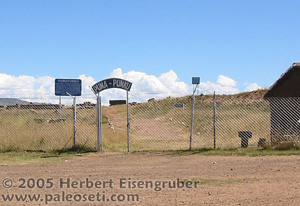 |
The entrance to Puma
Punku is located about 300m (yards) from Tiahuanacu's Museum. You go
through a
little mesh gate. There is a little shed for a guard who is sleeping in
the
grass most of the time. CAUTION! None of the guided tours includes a
visit to
Puma Punku! You have to insist to visit the site in order to get
access. During
the last years there is lot's of "reconstruction" going on in Puma
Punku. You should take as many photos as possible as it is quite likely
that
the sites real mysteries get "reconstructed" away. An example: In the
1960s and 70s Erich von Daniken described and photographed upside down
"water ducts" that had no lower halves. Those ducts could easily have
been ducts for energy lines. He published them in his books. After a
"reconstruction"those ducts have never been seen again...
|
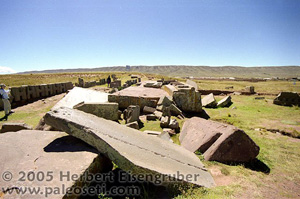 |
Puma Punku will blow
your mind. Huge blocks of granit lie around on top of each other seemly
completely random with showing any former building structure. Each of
those
blocks weigh several tonnes! Which amazing forces destroyed Puma Punku?
|
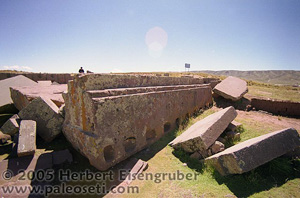 |
This big monolith
weighs over 300 tonnes! How did the ancients move those giants to Puma
Punku?
|
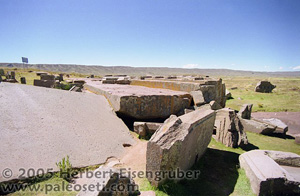 |
|
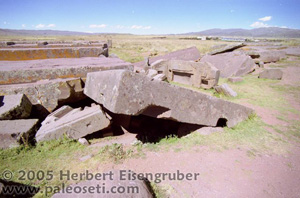 |
This block of granit
in the middle of the photo measures approx. 4x4 meters and is cut from
one
piece. On every corner you can see diagonal cutouts. This piece had to
be a top
piece that rested on a lower structure. All pieces look like they were
pre-fabricated. |
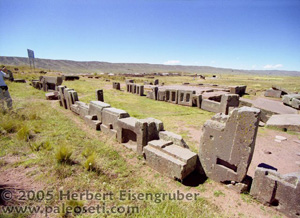 |
Archeologists just
gathered smaller pieces and put them on on the side in several rows.
Every
single piece should be carefully checked out! |
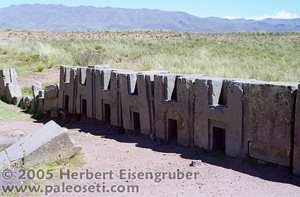 |
Those pieces are
fantastic! Erich von Daniken described them in his books several times
[ ].
They "click" into each other just like modern pre-fabricated building
blocks. Stacked and "clicked" into each other they form a wall. The
front of them look all the same, but if you check out the rear you will
see
that there are two different types of blocks (see next two photos) |
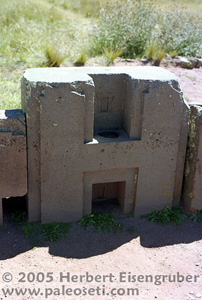
|
|
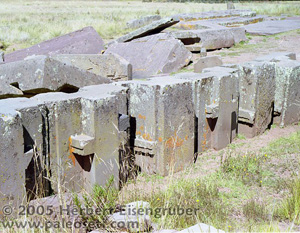 |
Here the backside of
the blocks. Notice the two different types mentioned above. |
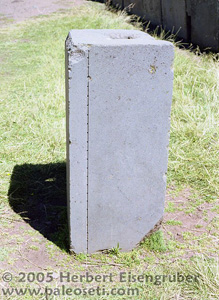
|
This mysterious block looks like it was tooled with a diamond cutter
and drill.
A very fine lined edge and tiny holes that were drilled with amazing
precision.
Why would ancient people need this? What were those markings for? Check
out the
next photo for a closer look.
|
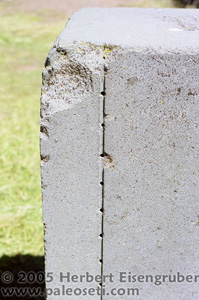
|
|
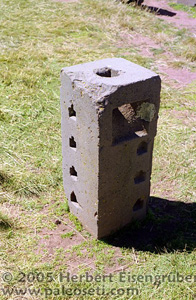
|
The other side of the
block is just as mysterios. What could this block have been used for? I
don't
think we can find an answer without assuming high technology was
involved. What
were the openings for? Were they openings for electric or data cables?
|
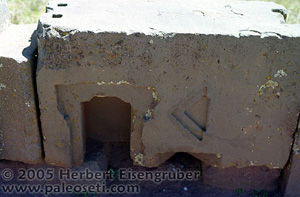
|
Modern symbols in
ancient times? This one looks like a modern "exit" arrow.
|
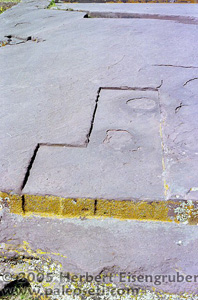
|
Look at the carving
on this rock. It's just about 1cm (0.5inch) deep. I have never seen
anything
like this anywhere else in the ancient world... |
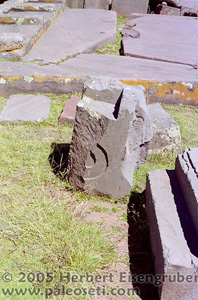
|
This block is broken,
but you can still see the circular carving. Another "modern" symbol?
|

